The rock paintings of prehistoric times are one of the earliest Indian paintings. The petroglyphs (also called rock engravings) found in places like Bhimbetka are older than 5500 BC. The Indian paintings of 7th century with carved pillars of Ellora are one of the finest examples of such works. Cave paintings of Ajanta and Ellora caves appeared later on. These paintings whose purpose was religious in the beginning; had developed gradually over the period of time with mixture of cultures and traditions. Later taught in various schools, these paintings had come up with various styles and patterns of their own.
Bhimbetka Rock Art - 30,000 years Old:
Situated in Raisen District, Madhya Pradesh, India, ‘Bhimbetka Caves’ are one of the World heritage sites. These caves rock art is considered as the clues for the existence of human life. The markings on the caves are said to be almost 30,000 years old. The paintings depict the time and lives of the people who lived in the caves. These include scenes of childbirth, dancing, drinking hunting, and religious rites such as burials.
Ajanta Caves Frescos - 2nd Century BC:
One of the oldest frescoes of historical period had been preserved in Ajanta Caves from 2nd century BC. The paintings had survived till date in-spite of the climatic conditions. More than 20 locations can be found in India that shows paintings and traces of ancient art till early medieval times (up to 8th - 10th century AD). The most significant frescoes are found in the Ajanta, Bagh, Ellora, and Sittanavasal caves. The Jataka tales (stories of the Buddha' life in former existences as Bodhisattva) are seen depicted in the walls of the caves. The narrative episodes are depicted one after another although not in a linear order.

Ajanta frescos
Source: http://upload.wikimedia.org/wikipedia/commons/d/d5/Ajanta_Painting_-_National_Musem%2C_New_Delhi_-_IMG_2227_cropped.JPG
Chola Frescoes - 2nd Century:
The Chola Paintings were discovered in 1931 within the passage of the Brihadisvara Temple in India. The dark passage of the corridor and the walls on either side are covered with two layers of paintings from floor to ceiling. The technology used in doing these paintings is ‘Frescoes’ - a technique of mural painting drawn on freshly laid lime plaster.

Chola Fresco of Dancing girls. Brihadisvara Temple c. 1100
Source: http://upload.wikimedia.org/wikipedia/commons/b/be/Chola_fresco.png
Manuscripts:
A Manuscript is written information that is created by one or more people. These are not defined by their contents which may combine writing, mathematical calculations, maps, explanatory figures or illustrations. A manuscript can be in a form of book, scrolls etc. Some may be enriched with pictures, decorations at the border, engrossed initial letters etc. Below is Manuscript Illustration of the Kurukshetra War in Ancient India.

Manuscript Illustration of the Kurukshetra War in Ancient India
Source: http://www.flickr.com/photos/17868932@N05/2793384804/sizes/m/in/photostream/
Kerala Mural Paintings - 9th-12th Century:
Kerala mural paintings are frescos that mostly show mythology and legends drawn on the walls of temples and churches in South India, mostly in Kerala. Most of the ancient churches, temples and palaces in Kerala, South India, display the tradition of mural paintings which dates back to 9th to 12th centuries CE.

Kerala Mural Painting
Mughal Paintings - 16-19th Century:
It’s a particular style of South Asian painting which mostly has miniatures as single work or book illustrations. The type of painting that developed largely in the court of the Mughal Empire during 16-19th centuries had influences from Hindu, Jain, and Buddhism. It had emerged from Persian miniature paintings.
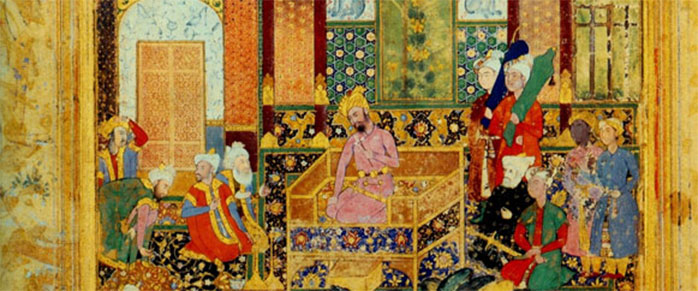
Mughal Painting
Rajput Paintings -18th Century:
A style of Indian painting which was also known as Rajasthani Painting, was flourished and evolved during 18th century in the royal courts of Rajputana, India. It’s derived from Persian miniature and Mughal painting. The painting styles of each Rajput kingdom was distinct but did had few common features.

An 18th century Rajput painting by the artist Nihâl Chand.
Mysore Paintings - 1336-1565 AD:
The distinct school of Mysore painting emerged from this legacy around the time of the reign of the Vijayanagar Kings 1336-1565 A.D.

Mysore Painting.
Tanjore Paintings - 1600 AD:
This art which dates back to 1600 AD has mostly form of classical South Indian paintings from town of Thanjavur. These are known for showing their richness, vivid colors and compact composition in paintings. Nayakas of Thanjavur encouraged art—chiefly, classical dance and music—as well as literature, both in Telugu and Tamil.
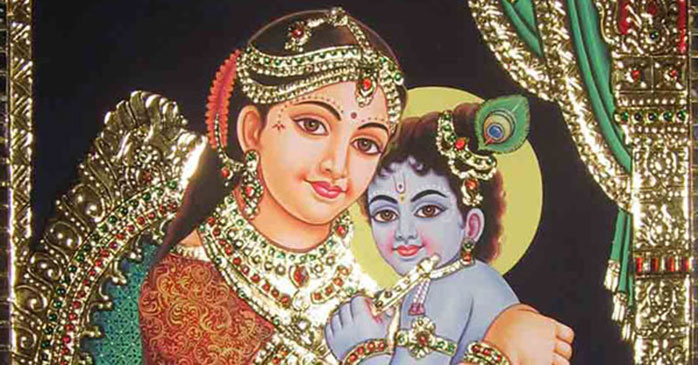
Tanjore Painting
Bengal Paintings - Early 20th Century:
The Bengal School of Art that flourished in India during British era in the early 20th century had influential art and a style of Indian painting that originated in Bengal.
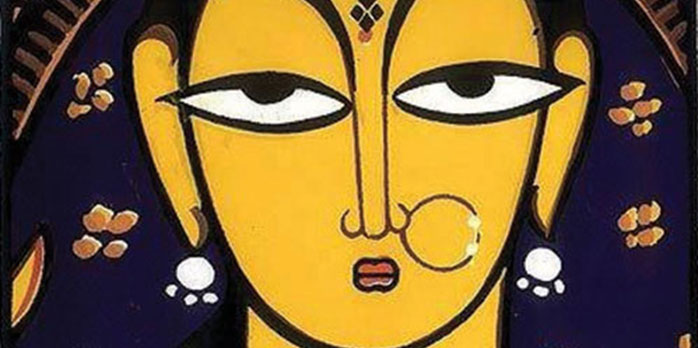
Bengal Painting
Modern Indian Paintings – Late 19th Century:
Modern Indian art is considered to have begun in late nineteenth century. One of the known artists of the time was Raja Ravi Varma (1848 - 1906). He made his debut into the world of art in 1873 by winning the first prize in Vienna Exhibition. He painted both – portraits and landscapes, introduced new elements, usage of canvas and oil colours. Most of his work showcased was based on Hindu epic stories and characters. Considered to be one of the finest painters for his work (Shakuntala) till then, was later criticized for being trivial.
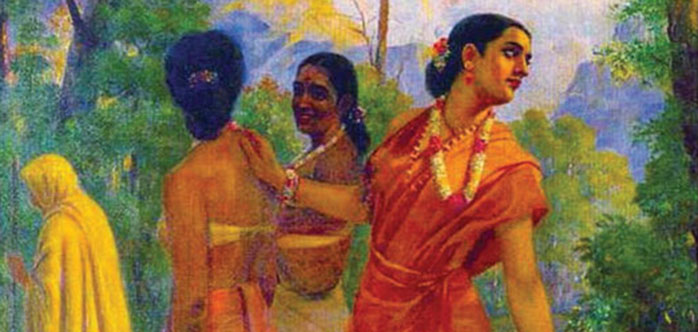
Shakuntala
Modern Indian Paintings 20th century:
F. N. Souza (1924 - 2002), the founder of the Progressive Artists Group of Bombay, was the first Indian artist to achieve recognition in the west post independence.
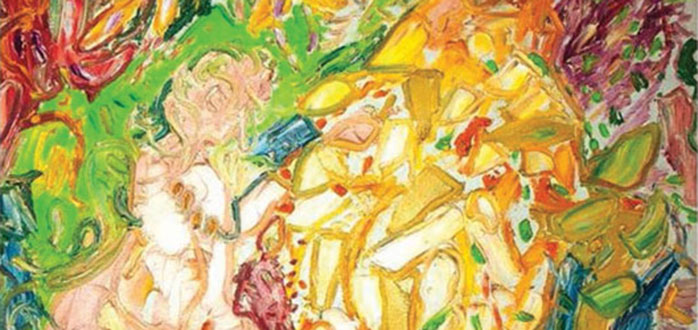
F.N. Souza – Balzac Etcetera
Modern Indian Paintings 20th Century:
S.H. Raza (born 22nd February, 1922) – An Indian artist, living in France since 1950, whose works showcase mostly abstracts in oil or acrylic were filled with icons from Indian cosmology & its philosophy. His seminal work 'Saurashtra' was sold for Rs 16.3 crore at a Christie's auction making him one of the India's priciest modern artists.

Modern Indian Paintings 20th Century:
MF Husain (1915 - 2011) was known as “Picasso of India". One of the most famous, Indian-born Qatari artist /painter; has influenced whole generation of artists. He was associated with Indian modernism in the 1940s.
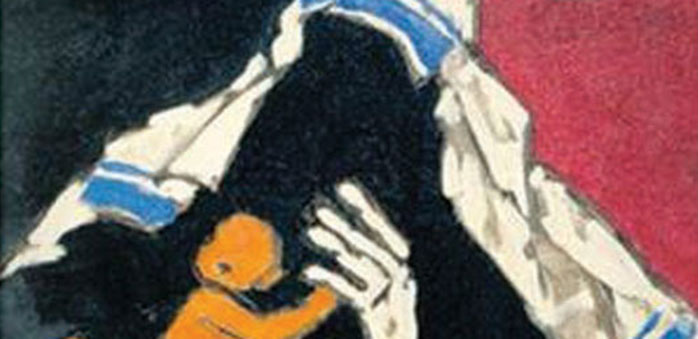
M F Hussain's Mother Teresa


![Bhimbetka rock shelters are approximately 30,000 years old and date back to the Palaeolithic Age. [Source: http://upload.wikimedia.org/wikipedia/commons/thumb/5/5d/Bhimbetka_Cave_Paintings.jpg/800px-Bhimbetka_Cave_Paintings.jpg] col-sm-4](https://dsource.in/sites/default/files/styles/mini_responsivecustom_user_moblie_1x/public/resource/history-graphic-design-india/paintings/minigallery/8559/1.jpg?itok=8cDQGw4V×tamp=1442817777)
![Bhimbetka caves from Bhopal. [Source: http://en.wikipedia.org/wiki/File:View_of_Bhimbetka,_World_Heritage_site,_Bhopal.jpg] col-sm-4](https://dsource.in/sites/default/files/styles/mini_responsivecustom_user_moblie_1x/public/resource/history-graphic-design-india/paintings/minigallery/8559/2.jpg?itok=qf3fwZs1×tamp=1442817777)
![Bhimbetka caves paintings. [Source: http://en.wikipedia.org/wiki/File:Bhimbetka.JPG] col-sm-4](https://dsource.in/sites/default/files/styles/mini_responsivecustom_user_moblie_1x/public/resource/history-graphic-design-india/paintings/minigallery/8559/3.jpg?itok=FvMf5lWC×tamp=1442817777)